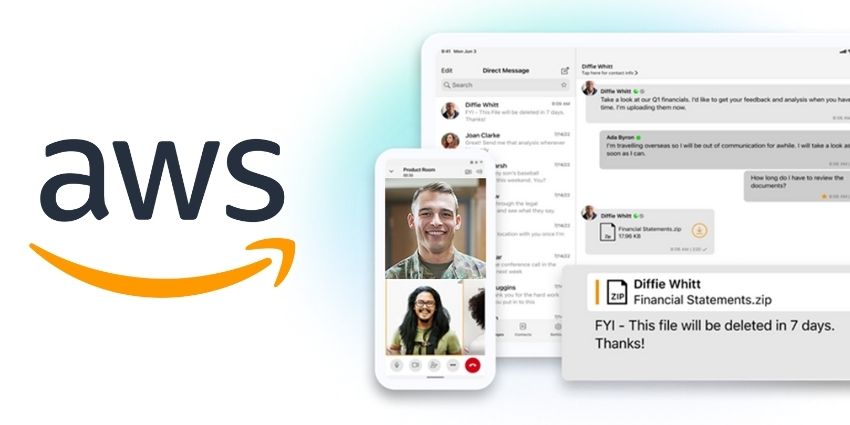The modern workplace stands at a critical juncture. As organizations navigate the complexities of hybrid work models and evolving employee expectations, the pressure to modernize workplace technology has never been more intense.
Equally, the return-to-office movement has exposed fundamental gaps in how businesses approach workplace transformation, revealing that traditional “big bang” implementations often fall short of delivering the promised productivity gains and employee satisfaction.
Today’s enterprises thus face a unique challenge: creating connected environments that seamlessly blend physical and digital experiences while maintaining operational efficiency and sustainability.
With employees now expecting workplace technology that matches the sophistication of their home setups, inadequate tech implementations in the office may result in any RTO mandates being met with resistance.
“If we take the human out of the experience, we’re not going to get people back into the office,” Robyn Erkelens, Senior Business Development Executive at New Era, said.
This also highlights how workplace modernization is often an enabler of other strategic business plans and decisions. Thus, getting it right is essential.
With its approach, New Era meets the customer where they are on their technology journey and then works around that.
“We look at the outcomes our customers are really trying to achieve. What kind of experiences are they trying to create for their workers? How does this support the culture? And what kinds of technologies need to be in place to do that? Then we take those smallest components and tackle them one by one,” Erkelens explained.
Although they cater to their customers, one thing that remains is their belief in an incremental approach to workplace modernization.
Why “Big Bang” Approaches Combust
The conventional wisdom of comprehensive workplace overhauls has consistently proven problematic for enterprise organizations.
“The big bang approach is really when corporations take on a ‘boiling the ocean’ task,” Erkelens said.
“There are some instances where it’s justified, such as when you’re doing a big new build, but ultimately you’re just creating a lot of risk by taking on all of those components at once,” she explained.
This comprehensive transformation methodology typically encompasses platform modernization, physical space redesign, infrastructure upgrades, security implementations, and data management overhauls—all executed concurrently.
While theoretically efficient, this approach “really creates a lot of risk,” according to Erkelens, particularly when organizations attempt to modernize without a clear understanding of interdependencies between systems.
The primary failure points of big bang implementations stem from their complexity and scope.
When organizations attempt to modernize platforms, physical infrastructure, security systems, and user experiences simultaneously, they often encounter cascading problems that are difficult to isolate and resolve.
This makes tracking where the issue has come from challenging, as well as fixing it in a way that doesn’t continue to affect the other systems.
This approach also requires significant upfront capital investment without the ability to validate assumptions or optimize based on real-world usage data before full deployment.
Furthermore, big bang approaches typically underestimate the human factor in workplace transformation.
“Building technology affects how employees experience the environment; therefore, it affects productivity,” Erkelens said.
Employees must adapt to entirely new ways of working across multiple systems simultaneously, leading to reduced productivity during transition periods and potential resistance to change.
The lack of incremental learning opportunities means that organizations miss critical insights about user behavior and system performance that could inform better design decisions if taking a slower approach.
Incremental Modernization: A Strategic Alternative
Forward-thinking organizations are adopting a more measured approach to workplace transformation, focusing on incremental improvements across the business that reduce risk while building toward comprehensive modernization.
“If you isolate each one of those into different silos, you’re missing a really great opportunity to affect change across multiple business units and really get more ROI out of those investments,” Erkelens explained.
New Era’s methodology, therefore, demonstrates how this approach can be systematically implemented across three key categories: infrastructure modernization, operational simplification, and transformative technology adoption.
Infrastructure modernization forms the foundation of successful workplace transformation, but it doesn’t require complete overhauls.
As Erkelens noted, “You can start with even the cabling or a new physical security system or access control. That could be one component of where you start small.”
This approach allows organizations to upgrade critical systems while maintaining operational continuity and gathering valuable performance data.
Operational simplification represents another pillar of incremental modernization.
This involves strategic resource reallocation and platform consolidation to “really put that value in different areas.”
Organizations can begin with specific operational pain points, such as IT field services management, to demonstrate value before expanding to more complex systems.
This approach helps build internal confidence and expertise while delivering immediate productivity improvements.
The third category, transformative technology adoption, focuses on the strategic implementation of emerging technologies like AI and advanced building automation.
Rather than attempting to implement comprehensive AI solutions across entire organizations, successful companies start with specific use cases that address clear business needs.
This measured approach allows teams to “pilot and then scale” while building the necessary data infrastructure and security frameworks to support broader AI initiatives.
Technology Integration for Productivity and Sustainability
Modern workplace transformation succeeds when organizations recognize that building technology, collaboration platforms, and employee experience are interconnected elements of a holistic ecosystem.
“You can’t affect one system without affecting the other system,” Erkelens emphasized.
Smart building integration represents a particularly compelling entry point for incremental modernization. By connecting IoT sensors, building management systems, HVAC controls, and lighting systems, organizations can achieve immediate energy efficiency gains while creating the data foundation for more sophisticated workplace analytics.
This can not only help with things like office occupancy reporting but also provides data on an increasingly important element of business operations: ESG.
“The ESG goals that we’re seeing when we apply smart building technology is between 17 and 20 percent. Thus, in some cases, it’s really paying for itself,” Erkelens explained.
The integration of UC platforms with building systems creates additional value through enhanced space utilization insights and improved collaboration experiences.
When occupancy sensors, guest management systems, and video conferencing platforms share data, organizations gain “actionable data for both sides of the house” that informs both operational efficiency and employee experience improvements.
This can help hot desk offices plan meeting times and even select which room to host them in.
Equally, integrated workplace technology platforms provide valuable data to HR departments for space planning, finance teams for cost optimization, and sustainability managers for ESG reporting.
Recognizing that employee adoption ultimately determines project success, design serves as “the foundation” for effective workplace modernization.
By “starting with that end user, the person that has to do the repetitive task,” organizations can ensure that technology implementations address genuine needs rather than perceived problems.
The compounding effect of these strategies means that initial technology investments deliver value across multiple business units rather than serving single departmental needs.
Partnering for Transformation Success
The complexity of modern workplace transformation requires expertise that spans multiple technology domains and a deep understanding of how these systems interact to create seamless user experiences.
Organizations attempting to navigate this transformation alone often struggle with the interdisciplinary nature of modern workplace technology, where building automation, UC, security systems, and data platforms must work in concert to deliver meaningful results.
New Era’s 28-year track record across 130 countries demonstrates the value of comprehensive technology expertise applied through measured implementation strategies.
“We really bring together all of the technology components required to deliver transformation,” Erkelens explained.
New Era’s multi-domain expertise enables organizations to avoid the common pitfalls of siloed implementations that fail to realize their full potential.
This breadth of capability ensures that workplace modernization projects benefit from integrated thinking from the initial planning stages through ongoing optimization.
The company’s approach to risk mitigation through incremental implementation has proven particularly valuable for enterprise organizations that cannot afford system disruptions or failed deployments.
By starting with pilot implementations and scaling based on proven results, organizations can confidently invest in workplace transformation knowing that each step builds upon validated successes.
This methodology has enabled clients like the University of Indiana School of Medicine to implement sophisticated AI programs while maintaining operational continuity and building internal expertise.
Additionally, their methodology of “starting with that end user” creates technology environments that employees actually want to use, addressing the fundamental challenge of driving adoption in modern workplaces.
When your technology partner brings both the expertise to see the big picture and the discipline to execute it incrementally, you don’t just avoid the risks of big bang implementations, you unlock something far more valuable: transformation that actually transforms.
For more information, visit New Era Technology.







